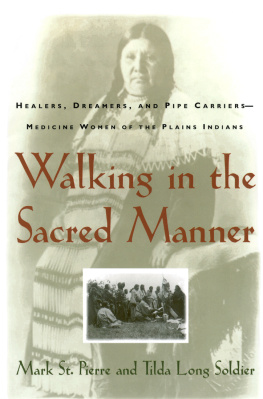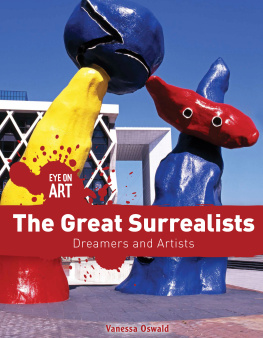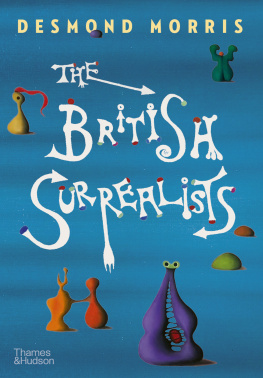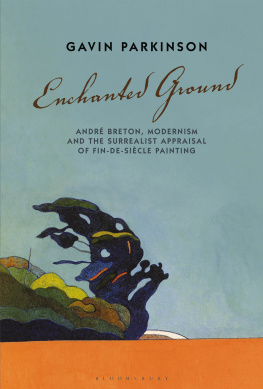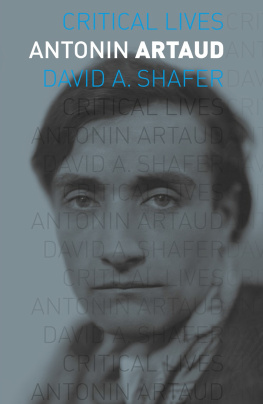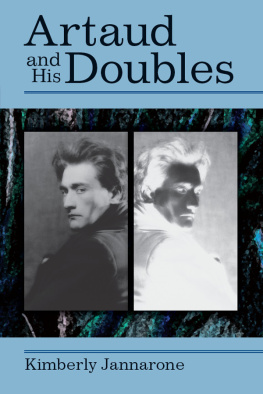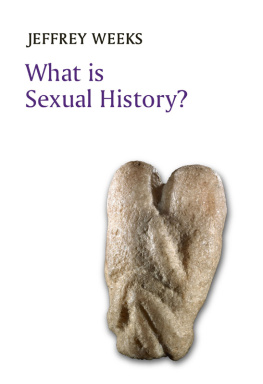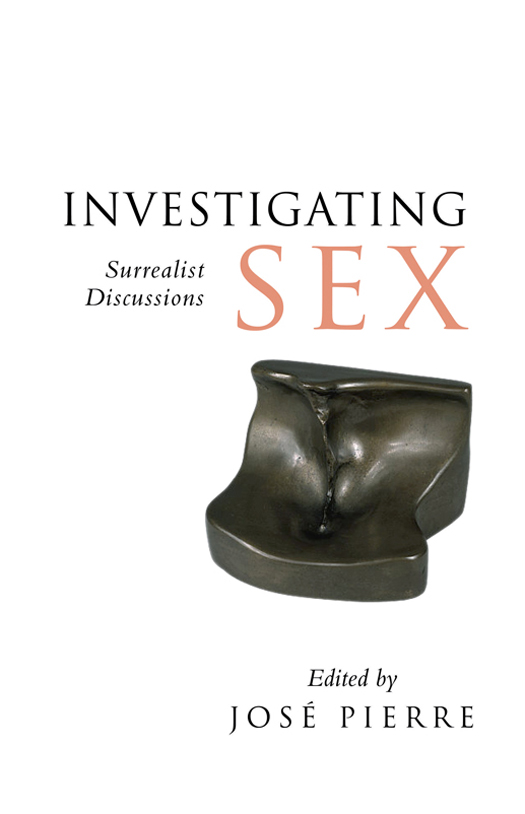This book has been published with the financial assistance of the French Ministry of Culture
This translation first published by Verso 1992
This updated paperback edition published by Verso 2011
Translation Malcolm Imrie 1992, 2011
Introduction JoAnn Wypijewski 2011
First published as Recherches sur la sexualit, janvier 1928aot 1932
by Gallimard, Paris 1990
Gallimard 1990
All rights reserved
The moral rights of the authors have been asserted
Verso
UK: 6 Meard Street, London W1F 0EG
US: 20 Jay Street, Suite 1010, Brooklyn, NY 11201
www.versobooks.com
Verso is the imprint of New Left Books
ISBN-13: 978-1-84467-712-2
eISBN (US): 978-1-84467-810-5
eISBN (UK): 978-1-78168-954-7
British Library Cataloguing in Publication Data A catalogue record for this book is available from the British Library
Library of Congress Cataloging-in-Publication Data A catalog record for this book is available from the Library of Congress
v3.1
Contents
Introduction
Recherches sur la sexualit is the name Andr Breton attached to the discussions that unwind across these pages. Research: the word was precisely chosen, for in those years between the wars the surrealist project aimed for a synthesis of the conscious and unconscious, the material and the marvellous, Marx and Freud and Arthur Eddington stirred into one heady but somehow definitive cocktail.
Eddington is the forgotten man. A British astrophysicist, an old bachelor, something of a poet and eccentric, he gave Einsteins theory of relativity the kiss of corroboration from the observable world, sailing to the African coast in 1919 to measure the refraction of starlight during a solar eclipse. Breton, who introduced the concept of automatism that same year, later called Eddington one of surrealisms precursors, and it is the latters mtier scientific inquiry, expressed in terms that were also literary, mystical, at times comic that seems to have most influenced the formation of these discussions.
For the surrealists in Paris in the 1920s, the laws of physics, the mechanics of things and of thought, the realm of human experience full to its outer limits, were active preoccupations. They named their meeting center the Bureau of Surrealist Research. They modelled their journal, La Rvolution surraliste, whose inaugural issue carried the first of the twelve sessions translated here, after a scientific review, La Nature. While deeply interested in psychoanalysis, they did not follow its approach in these discussions. Questions are asked with the expectation of concise, even correct, answers. Repeatedly throughout these sessions, Breton tries to snap the discussants to order; their purpose, he insists, is to establish objective facts, the concrete facts of love, the specific part [in love that] belongs to sexuality.
His judgement, of course, is entirely subjective. Love trips him up. Facts trip him up, as, from the first, they are as different from person to person as the dreams of two sleepers. Every line of questioning disintegrates. There is no method. The artists are not scientists, least of all Breton. They are lovers and prigs, fantasists and humanists, adventurers in mind if not always in flesh flawed, foolish, brilliant, clangingly sexual human beings. Because they are sexual, there can be no unity of desire among them, even on the small matters.
ANDR BRETON What does Noll think about the hero of one of Boccaccios stories, who fell asleep while the woman hed just made love with was holding his sex? Could he do that?
MARCEL NOLL Certainly.
BRETON Aragon?
LOUIS ARAGON As M. Paul Valery said, one can go to sleep on any idea.
BRETON Morise?
MAX MORISE That strikes me as true.
BRETON Pret?
BENJAMIN PRET I dont see how it would be possible to sleep in such circumstances.
BRETON Very good. Exactly. Does Morise let a woman touch his sex when he is not erect?
MORISE Why not?
BRETON Pret?
PRET In no circumstances. I would feel diminished.
BRETON Thats exactly the right word. Noll?
NOLL I hate it.
BRETON Aragon?
ARAGON If a woman touched my sex only when it was erect, it wouldnt get that way very often.
Throughout, what some in the group find desirable or unobjectionable others find disgusting (homosexuality), absolutely disgusting (a pregnant woman), violently disgusting (sex with a menstruating woman), repugnant (sex with a negress), odious (fatherhood, children), repulsive (sexuality in itself), a scandal (a womans unshaven sex). Breton regards some behaviour as pathological. Aragon objects, That seems to suggest that some of us believe in the idea of the normal man, and the others fall out on either side of the question. Avowedly revolutionary, the artists at times moralize like churchmen. Self-consciously modern, they talk seriously of succubi. (Or seem to; Dawn Ades offers a provocative interpretation of that oddity in her afterword.) Keen for measurable facts, they make measurement meaningless by their own calculations. A man and a woman make love. To what extent and how often can they reach orgasm simultaneously? Man Ray takes a stab: 75 per cent of the time, he declares. No, the others counter: 85 per cent 10, 15, 50, 8, 12, 2, 25 to 45, probably never, 0 to 1.
No is the effective constant in these conversations. Only onanism receives general affirmation, but that is a tenuous agreement, qualified by differences over whether self-abuse is sad or merely compensatory, over the proper circumstances and accompanying fantasies. By the final session, in August of 1932, the roster of participants is down to four. The women, who joined the discussions for the eighth session two years earlier, are gone; the men are no clearer about female sexuality than they were at the start. Exhaustion has replaced the liveliness of early days, and the investigation expires in a series of Nos. Full stop. Nothing more to say.
How like the end of an affair.
It is good, by the way, that the Recherches fail as science.
What the pages that follow reproduce is vivid, unruly. Most, and best of all, it is embarrassing. Science is not embarrassing. In his surveys of human sexuality, the idea for which began to germinate in Indiana shortly after the surrealist discussions ended in Paris, Alfred Kinsey took exquisite pains to minimize his subjects discomfort. Interviewers were trained to maintain an even tone and neutral mien. They provided cigarettes and avoided judgment. The sequence of questions was carefully structured, the least intimate inquiries first. (Frequency of a womans orgasm, for instance, was Question No. 305, barely ahead of the subjects age at time of first intercourse with an animal; love was not up for discussion.) Questions were to be posed frankly, and, Kinsey insisted, euphemism is to be avoided like the plague. Answers were precisely noted on prepared sheets, divided into blocks, which by the end would be filled with symbols, their position within the blocks representing a simple yet highly systematized code. Those privy to the code could comprehend a persons entire sexual history quickly in a few pages and translate the results into statistics. Most important, as the Kinsey Institute for Research in Sex, Gender, and Reproduction offers by way of reassurance more than a half-century later,


